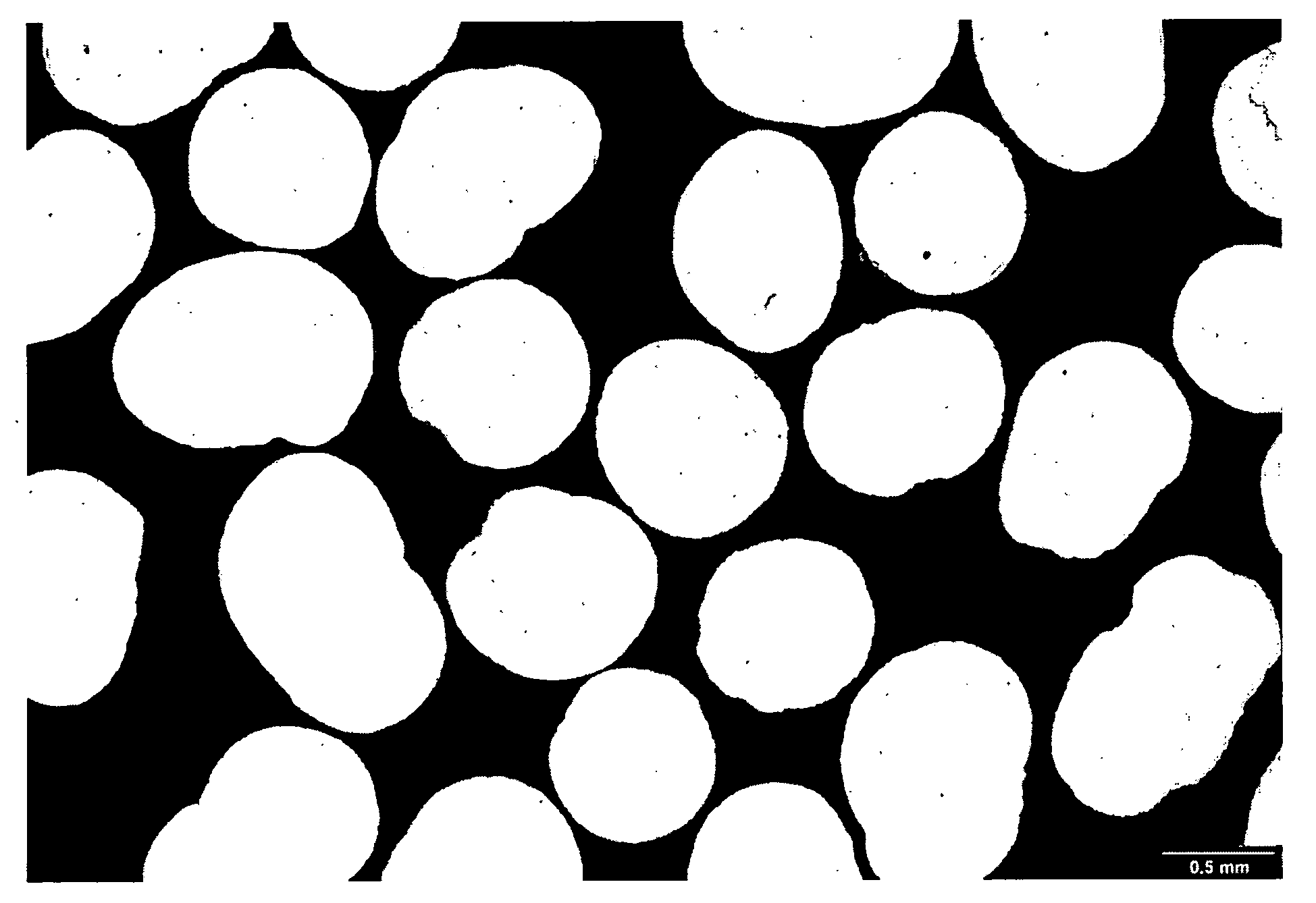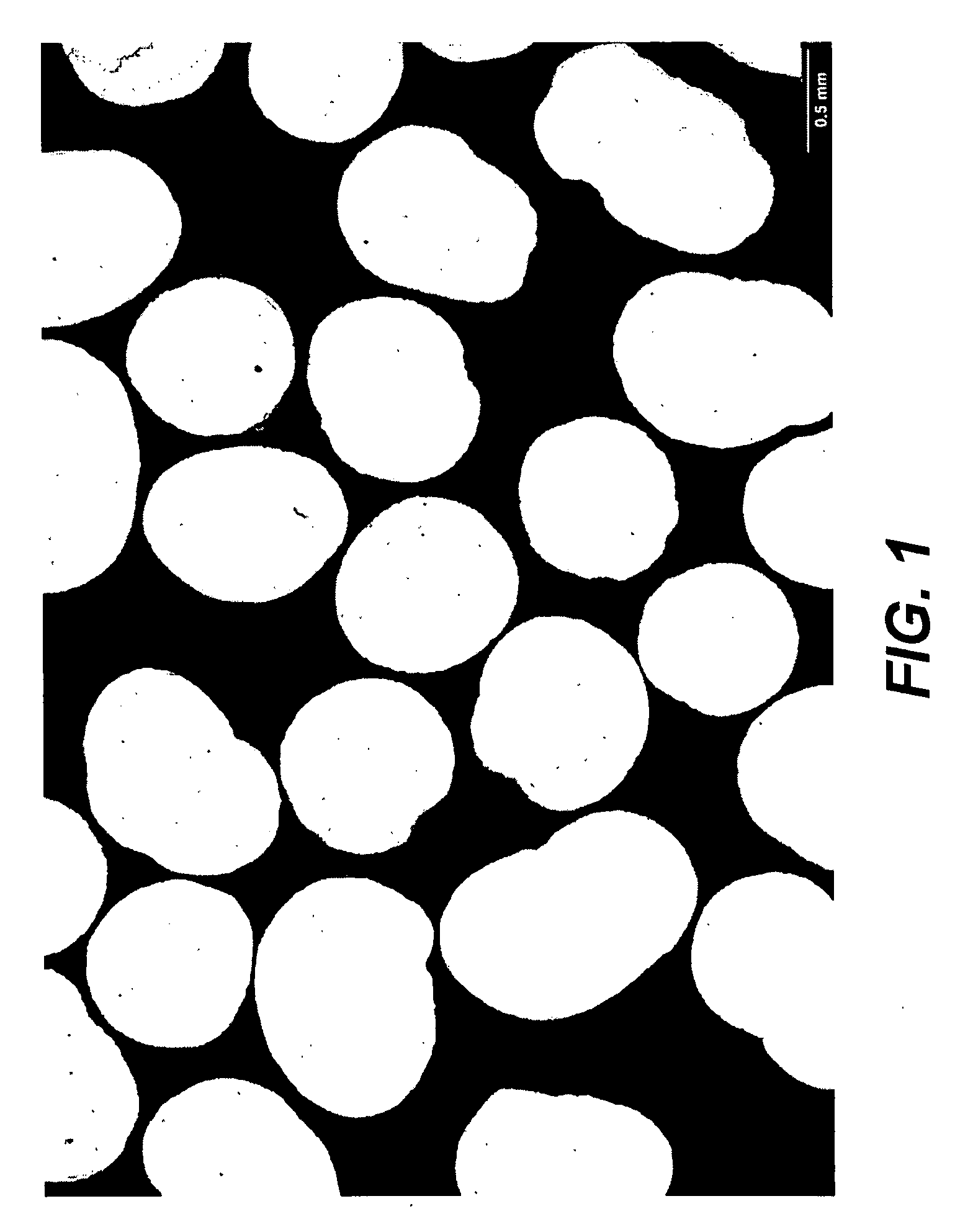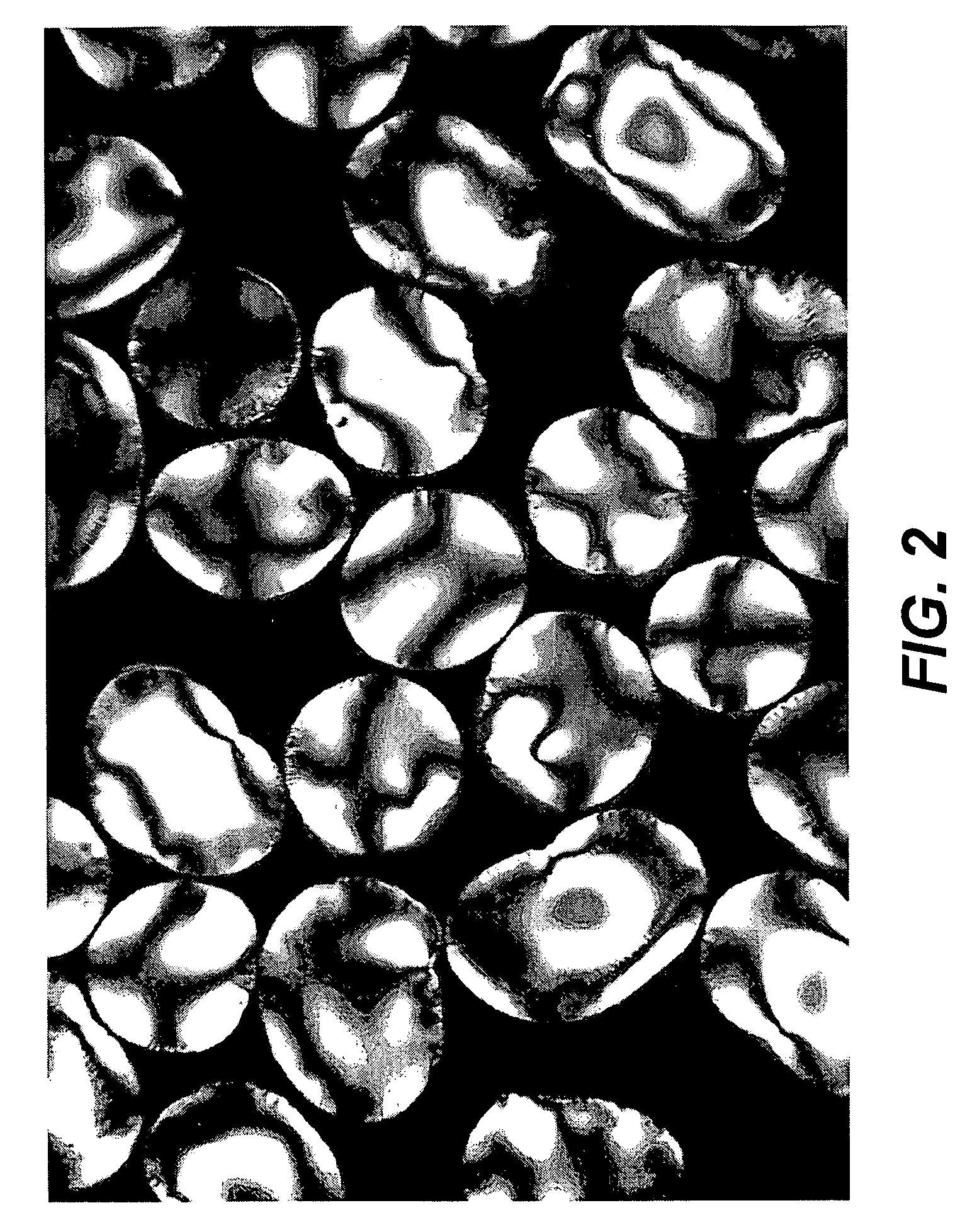Cellulosic Particulates and Method of Manufacture and Use Thereof
a technology of cellulosic particulates and cellulosic particles, which is applied in the direction of sealing/packing, chemistry apparatus and processes, and wellbore/well accessories, etc., can solve the problems of insufficient interstitial space, tight holding, and difficult transport of proppants, and achieve the effect of reducing or substantially preventing the passage of formation sand and/or fines
- Summary
- Abstract
- Description
- Claims
- Application Information
AI Technical Summary
Benefits of technology
Problems solved by technology
Method used
Image
Examples
examples
[0109]Particulates were prepared consistent with the procedures set forth in U.S. Patent Publication No. 2005 / 0288484 wherein a cellulosic material was admixed, in the substantial absence of water or a nitrogen-containing base, with an ionic liquid at a temperature between from about −10° C. to about 100° C. to form an admixture. The cellulosic material was dissolved in the ionic liquid. A cellulosic insoluble liquid was then added to the admixture and the precipitate recovered. Little, if any, swelling of the beads occurred when the beads were in the presence of water.
Physical Properties. The proppant beads were tested in light of the industry requirements for proppants. They exhibited 16 / 30 mesh (100%) and the properties as set forth in Table I:
TABLE IProppant RequirementsProperties of Tested BeadsSieve Analysis, >90%, API RP 56 / 60100.00%0.000.00Acid Solubility, 15% HCl, API RP 56 / 60 +0.9 + / − 0.08%Deionized water solubility1 +1.31 + / − 0.06%Crush ResistanceNo crush observedSpheric...
PUM
| Property | Measurement | Unit |
|---|---|---|
| specific gravity | aaaaa | aaaaa |
| temperature | aaaaa | aaaaa |
| temperature | aaaaa | aaaaa |
Abstract
Description
Claims
Application Information
 Login to View More
Login to View More - R&D
- Intellectual Property
- Life Sciences
- Materials
- Tech Scout
- Unparalleled Data Quality
- Higher Quality Content
- 60% Fewer Hallucinations
Browse by: Latest US Patents, China's latest patents, Technical Efficacy Thesaurus, Application Domain, Technology Topic, Popular Technical Reports.
© 2025 PatSnap. All rights reserved.Legal|Privacy policy|Modern Slavery Act Transparency Statement|Sitemap|About US| Contact US: help@patsnap.com



